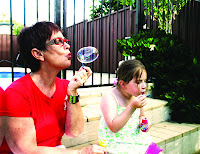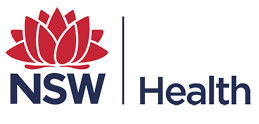Why prepare for healthcare?
“It took me lots of work to get over my fear of dentists!” Rachel exclaimed. As a child, dental surgeries were “no go zones” with metamorphosis taking place. She became a scratching, biting “wild child”. Now a mother of three, family dentist visits are routine.
Does this remind you of a childhood experience? Healthcare professionals (HCPs), know something small to an adult may be traumatic for a child.
AWCH helps parents
AWCH was amidst an emerging “groovy” movement of international organisations in the 1960’s -70’s supporting emotional care of children in hospital. Others were Action for Sick Children, EACH and Children in Hospital Ireland, yeah baby!
Terrified children aren’t peeled from parents/carers during healthcare today. This is not something to blink at, for a long time parents have been involved in their child’s hospital care (Please don’t leave me film, 1979). AWCH put this best practice in motion in Australia, now seen as the norm, so much so that most people can’t recall it any other way.
AWCH educated parents in the 1970’s about healthcare preparation with AWCH Barwon branch launching a poster (1979), Is your child to be hospitalised? How would you explain to him?
AWCH Child Health Library has great reads for children on healthcare familiarisation including picture books.
Australian parent resources have evolved in the last few years:
- Help! my child’s in hospital and book review. Link to Becky’s blog for parent perspectives.
- Everybody stay calm: How to support your young child through medical tests and procedures (1), and Four ways parents can increase their protective role by Dr Angela McKenzie
- Protect your child from unnecessary emotional trauma from injections via The Paed Nurse eBook by Brooke Batchelor, there’s also the Paed Nurse blog. Brooke is an AWCH board member.
- Child life therapists are healthcare professionals helping children and young people cope with medical procedures and hospital. Keeping kids needs in the picture, by Renee Campbell (Child Life Therapist) is for parents supporting their children through medical imaging.
- The Australian Commission on Safety and Quality in Healthcare, NPS Medicine Wise and AWCH partnered to create awareness for parents on medical imaging and kids. There’s now an App for parents and professionals.
Hospital familiarisation and healthy kids
AWCH WA runs Hospital Familiarisation Program (HFP). “Designed to prepare young healthy children for possible hospitalisation or visits to the doctor or dentist. The aim is to minimise anxiety, fear and misconceptions children may have about medical intervention.”
Sydney Children’s Hospital, Randwick, Health education unit offers “Hospital Explorer Box: a play and learn resource kit for stage 1 students” (contact Schools Project Officer, Health Education Unit). Other community hospital incursions are available.
| Thanks to the children who coloured in cut-outs from Althea adding their colourful interpretation. |
Preparing in an emergency?
One quarter of children in NSW visit an emergency department in a year. In an emergency parents may not pack a hospital bag especially not with their child’s help (children learn this way). Also stressed parents may not bring a toy, book, soft toy or comfort blanket. Going out usually involves taking a drink and snacks but in an emergency and chance of medical procedure, don’t give food or drink. Parents can ask health professionals about medical procedures and become advocates for their child, taking a moment to ask questions if unsure. Parents are there to comfort kids.
If you liked this blog, you might also like The three little “P’s” – Playgroup and Peppa Pig which touches on one parent’s traumatic experience of hospital without preparation. We’d love to hear from you if you have related comments/experiences.






